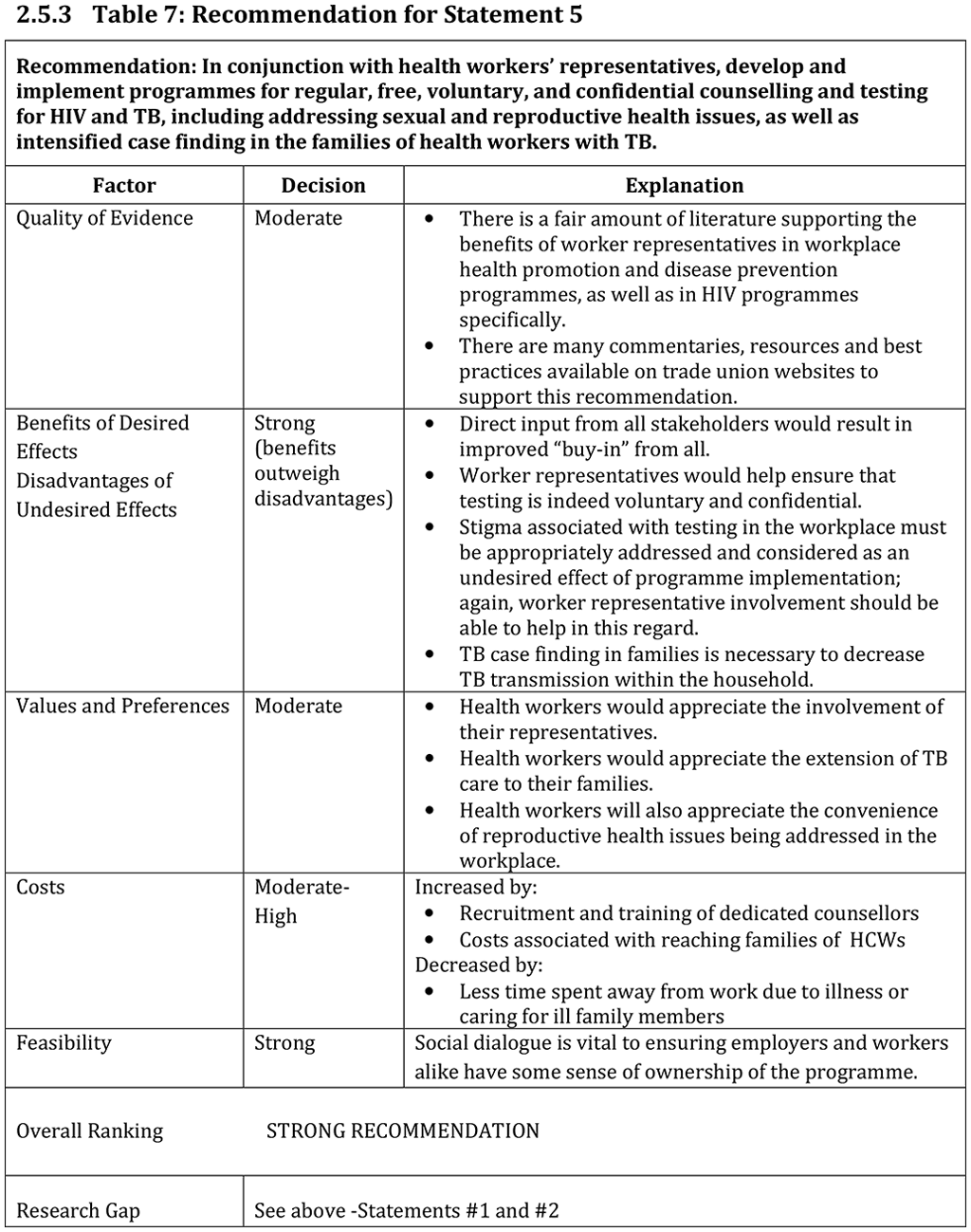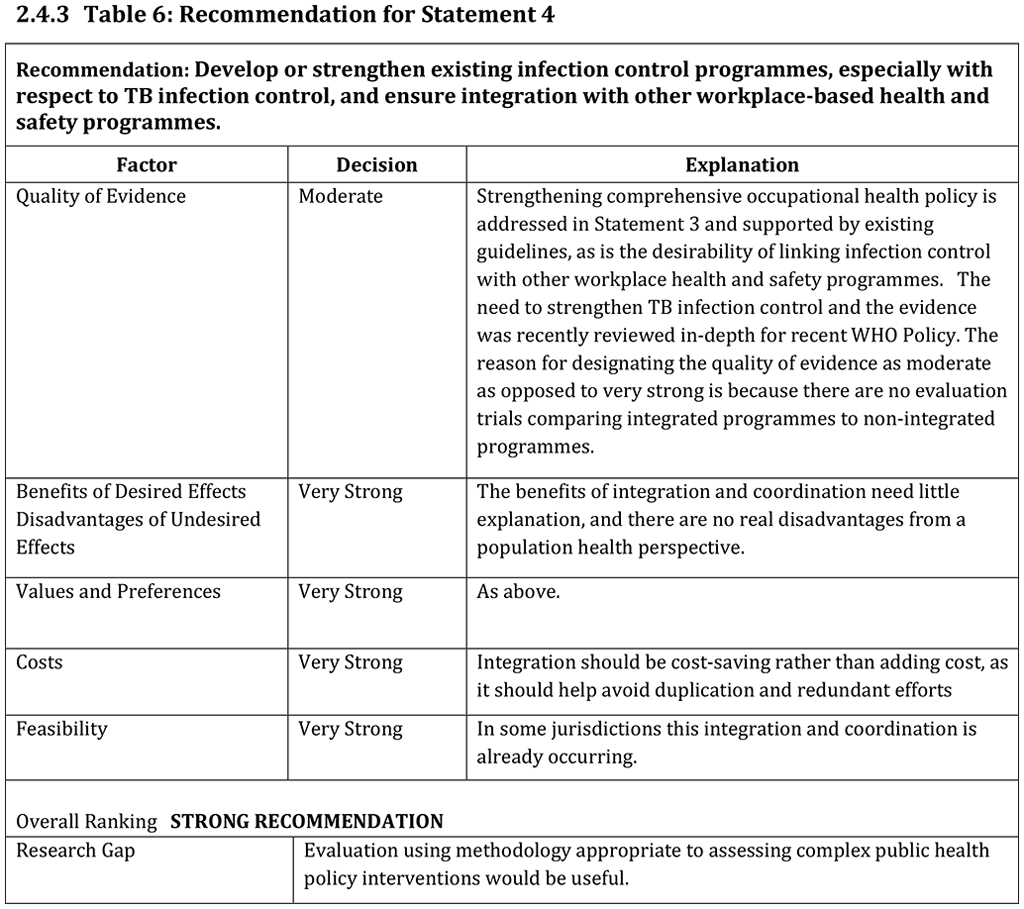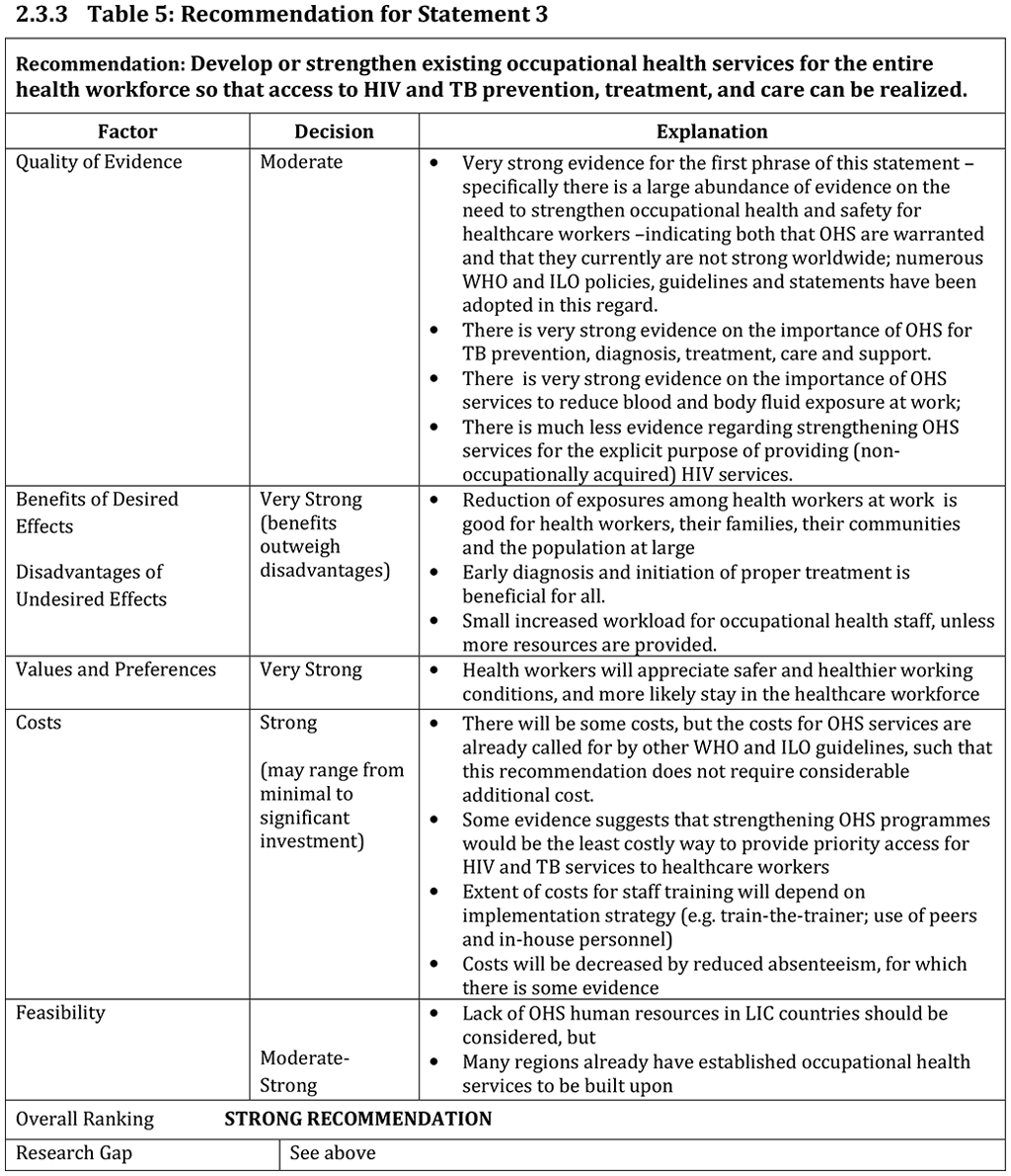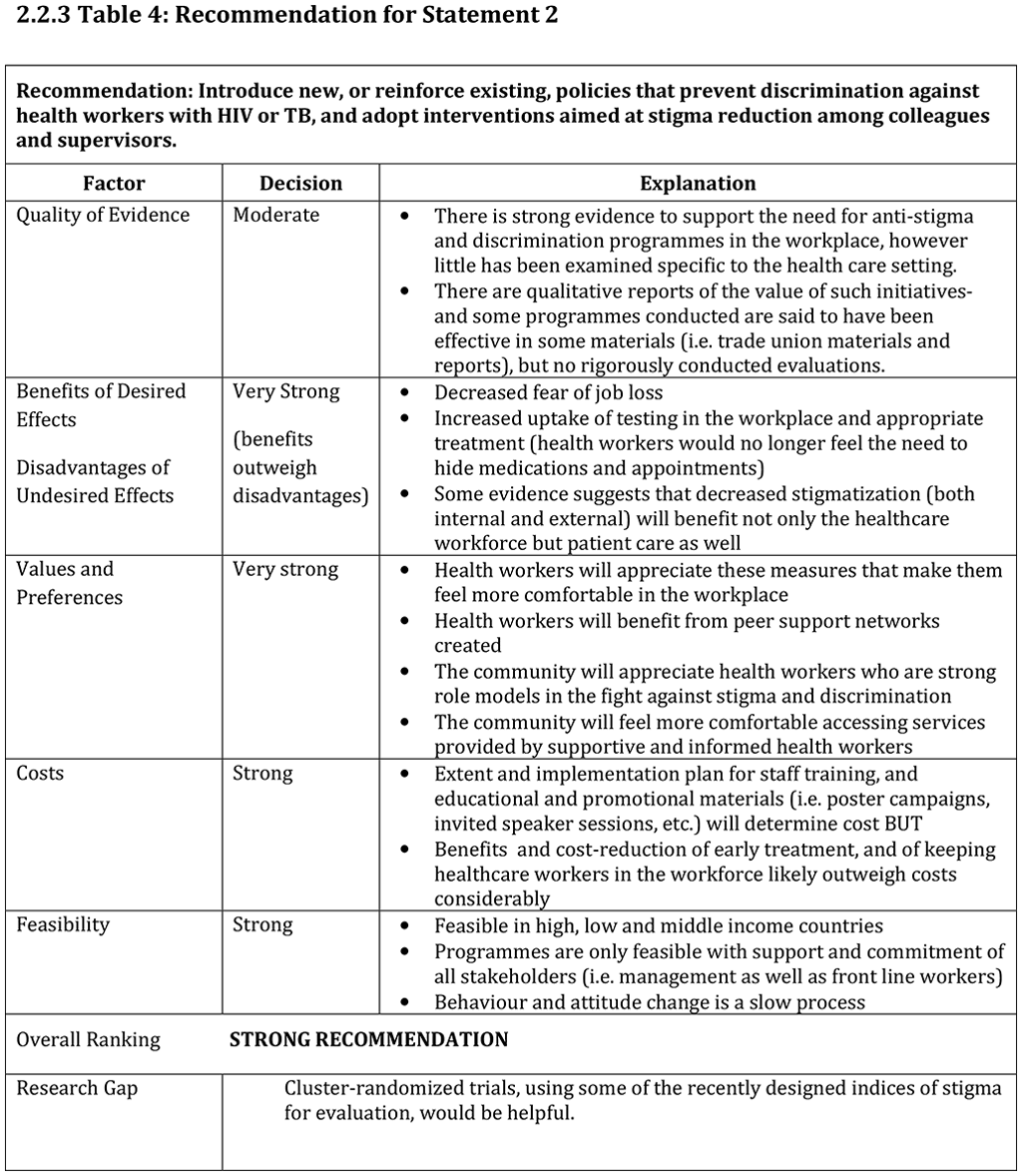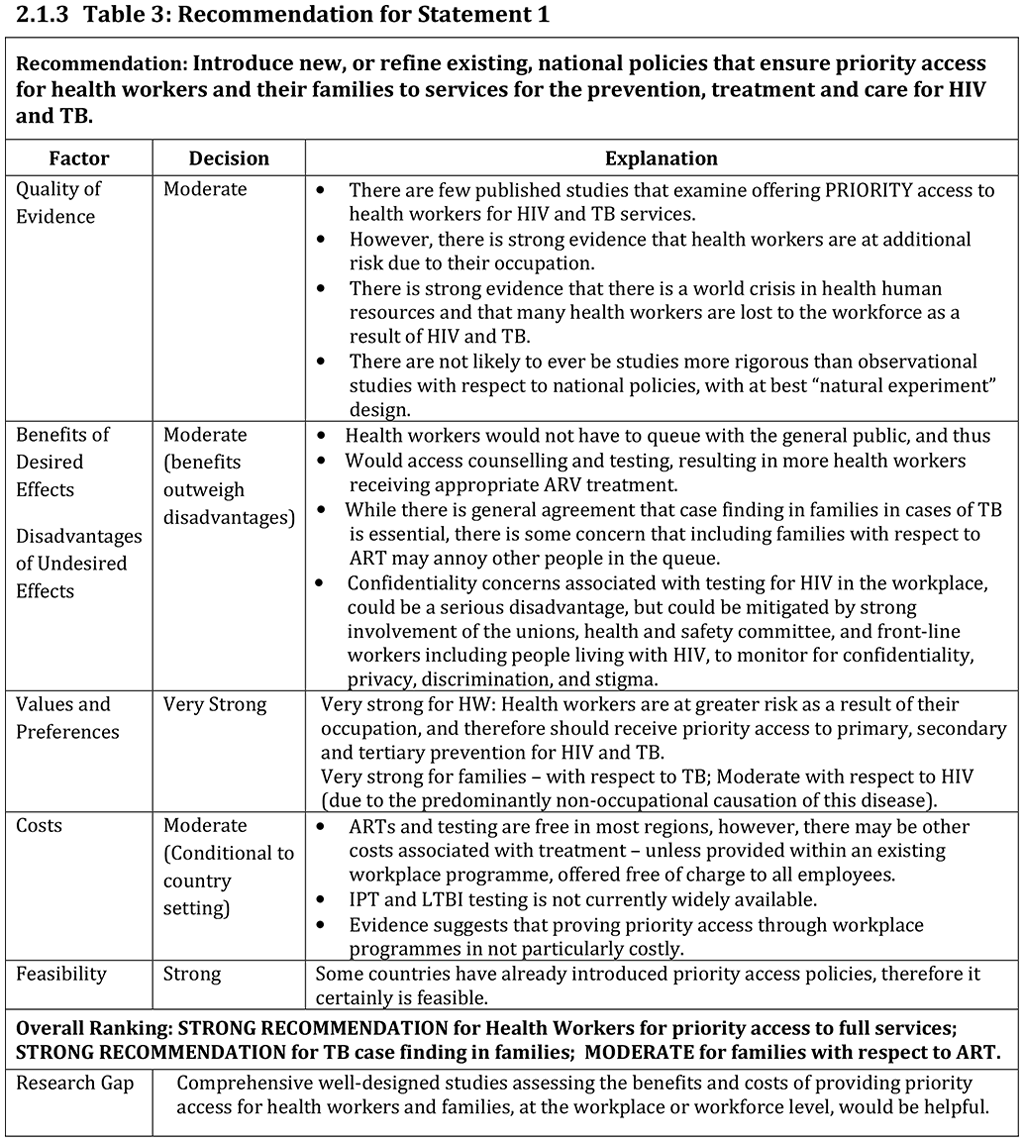Consolidated Guidelines
1.2.4 Methods for the Cochrane-Style Systematic Review
The Guideline Group, after a preliminary review of existing guidelines, as well as the results of the Five Country Study, the multi-country survey, and the preliminary literature review, identified three questions for a Cochrane-style systematic review, as noted above.
1.1.1 Target Audience and Scope:
The main target audience for these policy guidelines consists of policy makers in member states as well as all employers of health workers. The recommended policy guidelines are expected to be useful for health and labour departments, regional policy-makers, health facility managers, and all front-line health workers - including informal health givers. It is expected that these guidelines will also be useful to representatives of health workers, including unions and health professional associations, as well as occupational health and infection control practitioners.
Executive Summary
Background and Objective:
Annex 2: Follow-up and implementation; an Extract from the Report: International consultation policy guidelines on improving health workers' access to prevention, treatment and care services for HIV and TB 14-16 September 2009, WHO/Geneva (pp 41-46)
General Results of Guideline Group discussions and agreements
There is consensus among members of the Guideline Group that there is a need for a policy guideline from WHO/ILO
In the end, participants reached consensus, accepting 14 statements as a policy guideline. Countries can take statements and create advocacy material or collaborate with existing strategies already in place to increase access for Health Care Workers (HCWs).
Annex 1: WHO and other international guidelines referenced
EngenderHealth.(2004). Reducing stigma and discrimination related to HIV and AIDS: training for health care workers. New York.
EngenderHealth and United Nations Population Fund. (2008) Sexual and Reproductive Health of Women and Adolescent Girls: Guidance for health managers, health workers, and activists. Available from: http://www.engenderhealth.org/files/pubs/hiv-aids-stis/english-srh-guidance-final.pdf
Pagination
- Previous page
- Page 32
- Next page
 Feedback
Feedback